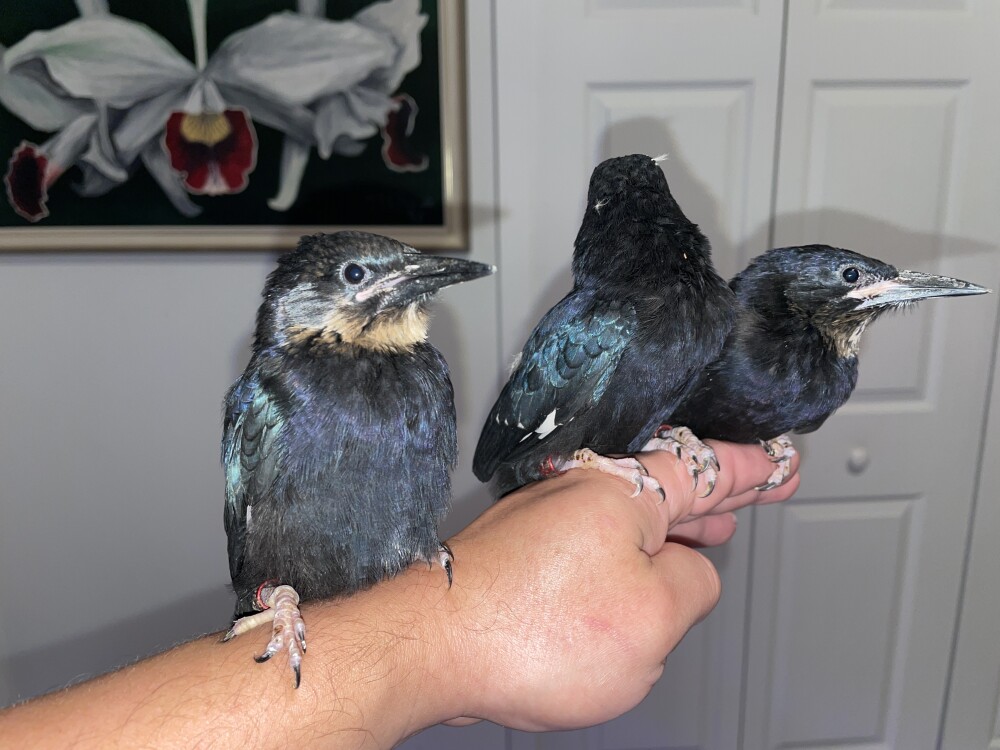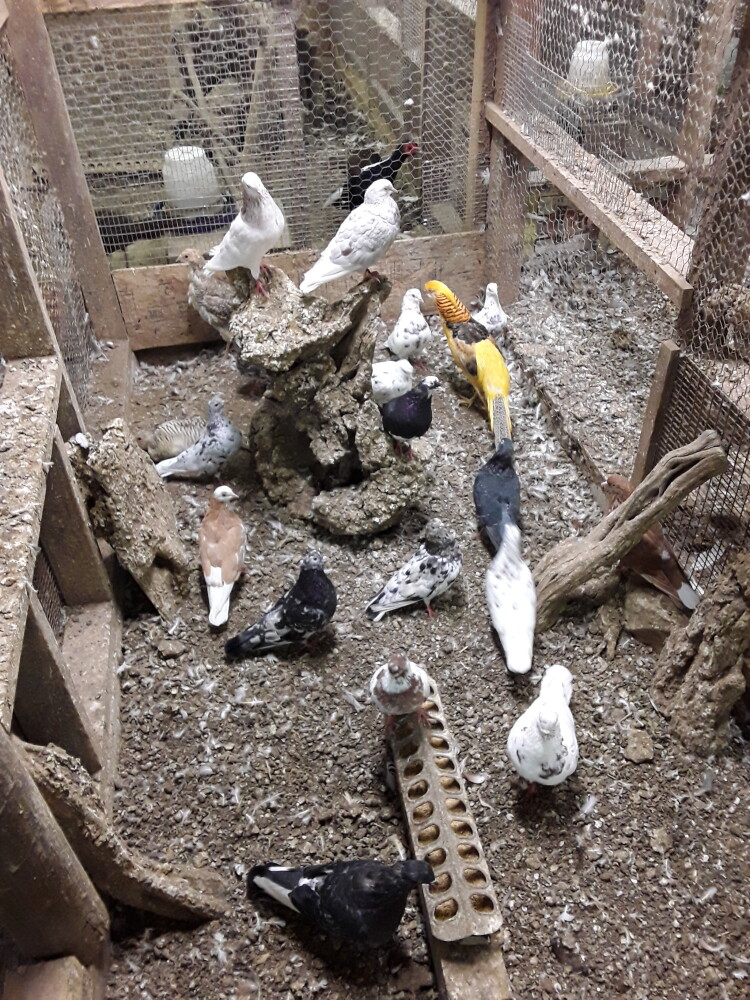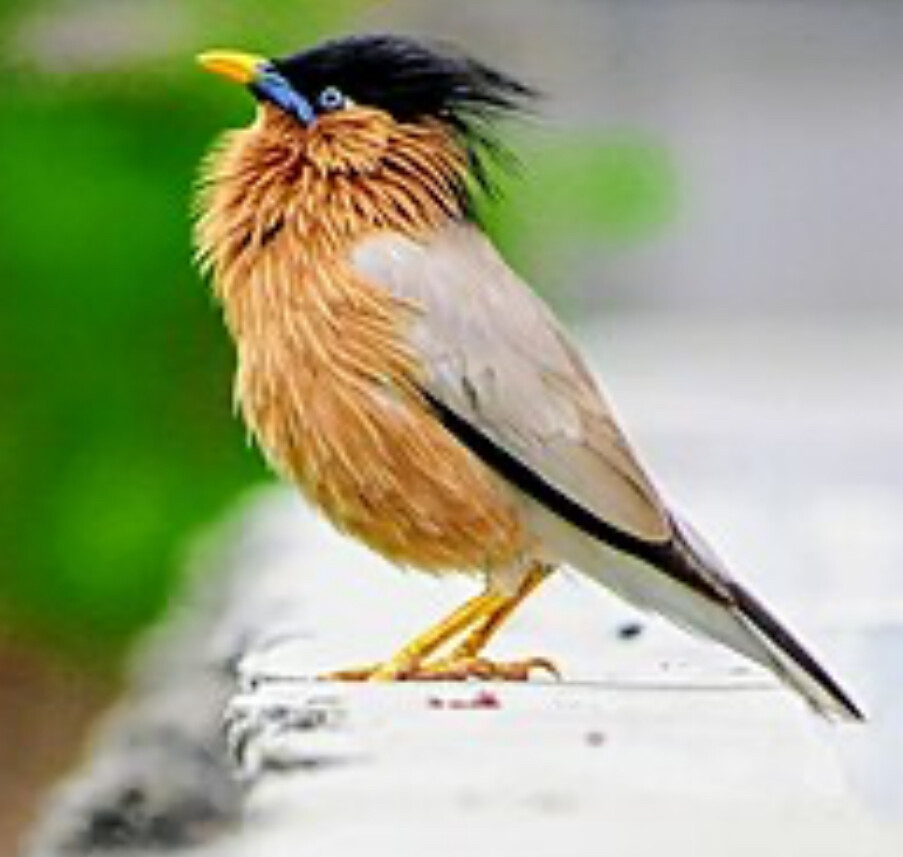Rollers for Sale
Rollers comprise about 12 passerine species in the Coraciddae family. Coraciidae family members are birds classified by their dives and somersaulting they do in flight during courtship displays or territorial behaviors. They are of close relationship to the bird species, Kingfishers and Bee-eaters. They choose to dwell in warm regions of what is known as the “Olde World”, such as in Europe, Africa, and Australia, however, fossils of the bird indicate that they once had populations present in North America during the Eocene (an era in the geologic timeline). Africa is the believed place of origin because most of the family's species live there today. The Roller looks like a jay, predominantly bluish violet in color, but is like in size to the Crow. They grow to be between 10 and 13 inches in height. Their two inner toes are connected, but not the outer one. This allows for them to more easily catch flying insects, their main staple, mid-air.

Birds available
- Name: Robert Yoshida
- Posted: 10/27/2025
- Email: Email Seller
- Location: Florida
2.0 Green wood hoopoes 1.0 Fischer’s turaco 1.1 Bank mynah 1.1 Pagoda starling 1.0 Lady Ross turaco 1.1 Superb starling 2.0 Blue bellied roller 3.0 Masked lapwing 0.2 Pink necked green pigeons 3.0 Black chinned fruit dove 1.0 Fairy Bluebir...

Gamebirds
- Name: Gary Sublette
- Posted: 10/23/2025
- Phone: 541-476-6005
- Email: Email Seller
- Location: Oregon
Birmingham roller pigeons: $15.00ea, Fireball & Almonds $ 25.00ea. Pheasants: Red &Yellow Goldens, Sliver, Swinhoe $80.00ea. Mongolian Ringneck & Melnistic mutant Ringneck $40.00ea.

Birds available
- Name: Robert Yoshida
- Posted: 09/08/2025
- Email: Email Seller
- Location: Florida
1.1 Pagoda starlings 1.1 Bank mynahs 1.1 Black throated magpie jays 1.0 Fischer’s turaco 1.1 Blue eared glossy starling 1.0 Blue bellied roller 1.1 Superb starlings 3.0 Masked papwings I have those birds available and ready to go, shipping...
Types of Rollers for Sale
The Roller has limitations that other species don't often experience. They have weak legs and feet so you will not find them hopping or moving along perches like other species. They seldom use their lower bodies, and fly where they need to be. If you are thinking this may be a setback when they encounter predators, you'd be right.
Rollers typically gather in large, noisy flocks to feed on their diets of insects, lizards, and other small animals. They are watch-and-wait hunters, in part due to their weak legs and feet. Their plan is to perch in a tree until a prey is spotted, then descend upon it and carry it back to the perch to be dimembered. Rollers will often consume prey that other species avoid, such as hairy caterpillars or insects with warning coloring such as red. They will also ingest rodents and young birds. Where termites and flying ants appear after thunderstorms, The Azure Roller and Dollarbird will hunt swarms of them at a time. Tens or hundreds of Rollers will hunt together after storms such as these.
Rollers are monogamous birds who once mate, will find a nesting place in the hollow of a tree or inhabit an abandoned termite nest. In their nests, they lay 2-4 white eggs if living in a tropical region, and 3-6 in regions of higher latitudes. Egg laying is staggered one day at a time, so that if food is short, the oldest will be fed first, ensuring their survival. The eggs will hatch their young in 17-20 days and they'll remain in the nest for the first month. Rollers are loud and can be aggressive when they have to defend their nests. They spend much of their days patroling and displaying their plumage to intimidate. If necessary, the Roller will attack intruders by diving at them.
As previously stated, most Roller species reside in Africa, but many of the other species still migrate to Africa in the winter months. Some species are sedentary, or short-range migrants.
The Blue-bellied Roller and the Lilac-breasted Roller are popular species kept by zoos and aquariums. It's hard to report on all 12 species of Rollers' endangerment statuses, but many are listed as “Least Concern”. Because they are such a beauty of many of their regions, conservation efforts and policies to protect them are enforced.

Comments